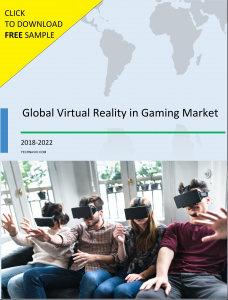Not so long ago, the very idea of simulated three-dimensional worlds that are created using interactive hardware and software seemed like an impossible concept. However, today, things are completely different. Virtual Reality (VR) has gone mainstream and has led to the rapid growth and progress of an assortment of industry verticals from B2B tools to gaming enhancements. As per recent research, more than 171 million people across the world could be using VR software and hardware by the end of 2018, and ‘Virtual Reality Gaming‘ will be a key contributor to this adoption.
 VR integrated into the gaming industry
VR integrated into the gaming industry
Virtual Reality exploded into the gaming industry over a year ago and is now gaining tremendous momentum. Virtual Reality gaming offer an interactive experience and additionally, reinvigorates the sub-industries that help produce the peripherals that enhance said gaming experience. Although VR might not fundamentally transform the current gaming scene, it most definitely will lead to the appearance of new games and the revival of some old titles.
The last two years have posed a critical test for VR gaming’s future, with many high-end headsets debuting in the market. Nevertheless, high prices combined with a limited collection of games have kept top end devices like the HTC Vive and Oculus Rift from mainstream gamers. However, with time, the technology will surely become more accessible, and VR technology will likely create a number of niche opportunities. Game development will most definitely be one of the more lucrative of such niches.
Moving beyond 3D: a whole new level of gaming experience
Gaming has come a long way since its early days when Atari introduced the home version of pong in 1972. Although 2D and 3D games continue to hold a fair share of the gaming industry, the future of gaming fits in snugly with the new breed of VR platforms. Advances in hardware, as well as software refinement is taking VR gaming to increasingly practical levels. The conventional 2D and 3D games pale in comparison to the interactive and immersive experiences offered by VR gaming platforms.
Virtual reality in gaming delivers full immersion, 360-degree vision, increased realism, and excellent surround sound to the modern-day gamer. The speedy rise of the VR mania can be best summarized by an example from 2015, when the first virtual reality headset was launched for regular users. It was the Oculus Rift CV1 headset, and the entire first consignment of it was sold within 15 minutes from the presale release time.
Unlike 3D games where gamers become a spectator entirely, VR provides gaming experiences in a three-dimensional environment that allows them to interact with the surroundings. The idea of VR lies in the fact that peripheral vision is accounted for, which creates the signature immersive effect. In 3D, by contrast, the entire field of view isn’t overlapped, thereby massively limiting the gamers’ visual involvement.
Innovation and inclusion defines the future of virtual reality gaming
Most online and mobile games are not designed for VR, as they are usually crafted for a keyboard with a gamepad or a mouse. However, VR technology is developing at a dynamic pace- with the introduction of groundbreaking VR gaming systems from the likes of Google and Sony into the commercial market, widespread adoption of VR gaming is indeed already underway.
Although the overall sales of VR gaming devices have not been as high as initially predicted, the figures will organically rise over time with more investment into the technology that translates into new games and movies being introduced for the consumer marketplace. HTC, Sony, and Facebook-owned Oculus are few of the top players in the virtual reality gaming industry, each striving to stake out a large territory in this growing market.



